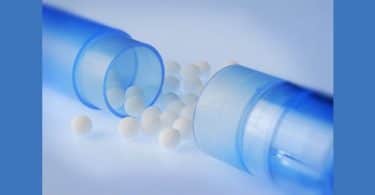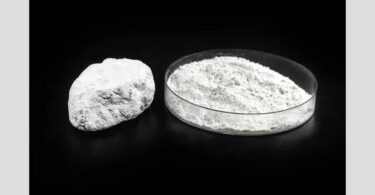Mitral, Aortic, Tricuspid and Pulmonary
- The valvular lesions of the heart are: Mitral insufficiency, aortic insufficiency, tricuspid insufficiency, pulmonary insufficiency, mitral stenosis, aortic stenosis, tricuspid stenosis and pulmonary stenosis.
- The causes of valvular disease (Homeopathy Treatment for Valvular Heart) may be inflammation, calcareous, cartilaginous or ulcerous degeneration. Change in the walls, as from hypertrophy and dilatation may also give rise to valvular lesions.
- The pathological changes that occur are contraction, thickening, calcareous infiltration and fibrous sclerosis. Rupture sometimes occurs.
Mitral Lesions
- The mitral valve is the one most frequently diseased in young people. The activity at this time of life taxes the left heart.
- In mitral insufficiency the two segments of the valve do not close properly, from rupture, inflammatory contraction of the columns, from dilatation or weakening of the left ventricle.
- The chief causes of mitral valvular lesions are (1) a vitiated state of the blood, from rheumatism, pygemia, Bright’s disease, syphilis, alcoholism, etc. (2) sudden muscular strain, (3)fevers; (4) occasionally congenital defects. The pathological changes in the valve are contraction of the fibres or tendons and sometimes rupture of the muscular columns. Insufficiency of this valve causes dilatation of the left auricle and eventually hypertrophy of the left ventricle.
- The diagnostic sign of mitral insufficiency is a murmur or blowing sound heard best at the apex, synchronous with the first sound of the heart. The other valve sounds may be normal.
- Mitral stenosis is a condition where the left auricular- ventricular opening is imperfect so that the flow of blood from the left auricle is impeded.
- The causes are the same as those already noted being chiefly inflammatory, resulting in thickening, contraction and adhesion of the mitral segments.
- A rough pre-systolic thrill is felt near the apex. The area of dullness is increased to the right. A prolonged, rough, churning murmur, pre-systolic in time, is heard a little above and to the left of the apex. The second sound is usually increased. A sequence is tricuspid regurgitation from consequent hypertrophy and dilatation of the left auricle. The face is pale.
Aortic Lesions
- In the aged the aortic semilunar valves are most frequently affected.
- Aortic insufficiency is due to a failure of the valve segments to close properly so that there is a regurgitation of blood back into the left ventricle at every dilatation of the ventricle.
- The special pathological causes are rupture or inflammatory contraction of the segments or from dilatation of the orifice from hypertrophy of the left ventricle.
- The diagnostic signs are: (1) A shot like or “water hammer” pulse; (2) The arteries pulsate visibly; (3) There may be precordial bulging; (4) The apex beat is forcible and located downward and to the left; (5) Area of dullness increased; 6) At right second intercostal space maximum intensely of a diastolic murmur.
- Aortic stenosis or obstruction is a thickening of the segments of the valve, by inflammatory action or calcareous infiltration or from adhesions, so that the onward flow of the vital current is impeded.
- The cause in the majority of cases is rheumatism. Inflammation or degeneration produces changes in the segments. Calcareous thickening is met with in old people who live in limestone sections.
- The heartbeat if strong is found downward and to the left. Increased area of dullness especially to the left. At the right second intercostal space a strong systolic murmur and it is transmitted to both carotids. The pulse, when the heart becomes weak is small and slow.
- The sequela of mitral insufficiency and stenosis are tricuspid insufficiency and regurgitation. The result of aortic insufficiency and obstruction is mitral regurgitation.
Tricuspid Lesions
- Tricuspid Insufficiency or regurgitation is caused by an imperfect closure of the right auricular ventricular valve.
- Inflammation produces shortening of the valve columns or more frequently dilatation of the right ventricle. Secondary to mitral disease or to chronic lung disease.
- The physical signs are enlargement of the heart, a systolic murmur soft and blowing, heard most distinctly just above ensiform cartilage with pulsation of jugular veins and in some advanced cases pulsation of the liver.
- The consequences are that the whole venous system becomes engorged, and we have enlargement of the liver and spleen with blue skin, anasarca and finally effusion into the serous cavities and death. If the regurgitation is slight such serious results may not follow.
- Tricuspid Stenosis or obstruction is due to adhesion of the columns or growths thereon, that interfere with the flow of the blood through the right auricular-ventricular opening.
- This is an exceedingly rare lesion and is usually of foetal origin. It may result from inflammation.
- The chief symptom is presystolic murmur located over the ensiform cartilage very feeble and not transmitted. Hypertrophy of the right ventricle is detected.
Pulmonary Valve Lesions
- Pulmonary Obstruction or Stenosis is a very rare lesion and a defect of the pulmonary valve interfering with the systolic current from the right ventricle. It is usually congenital.
- A systolic murmur at the second left interspace is diagnostic. Enlarged right ventricle extending well to the right of the sternum. Pulse weak, surface, especially of the extremities, cold. Cyanosis, often extreme. Finger ends clubbed, blue; nails curved and thick. Dyspnea.
- Pulmonary insufficiency causes regurgitation of the blood (being forced into the lungs) back into the right ventricle. This also is a rare lesion and is usually congenital. It produces a diastolic murmur or thrill heard best at the left second interspace. The apex beat on account of right ventricular hypertrophy, becomes displaced to the left. Tricuspid systolic murmur or thrill from dilation and, insufficiency is apt to occur.
Order and Results
- The order of frequency of valve lesions are given as,
(1) Mitral insufficiency, (2) Aortic stenosis, (3) Aortic insufficiency, (4)Mitral stenosis, (5) Tricuspid insufficiency, (6) Pulmonic stenosis, (7) Tricuspid stenosis, and (8) Pulmonic insufficiency.
The effect of mitral lesions is to bring about tricuspid regurgitation. Aortic lesions are followed by mitral incompetency. The order of gravity of the various forms of valvular lesions is, (1) Tricuspid regurgitation, (2) Aortic insufficiency (often ending in sudden death), (3) Aortic stenosis, (4) Mitral stenosis, and (5) Mitral insufficiency.
The general unfavorable conditions are early life, advanced years, great cardiac enlargement, irregular heart action, recurrent attacks of rheumatism, bad hygienic surroundings and symptoms of venous congestion of the lungs, kidneys and digestive tract.
- Compensation offsets for a time the serious effects of valvular lesions. This is brought about by an increase in the size and strength of the cardiac chambers sufficient to enable the heart to furnish the outflow of blood to properly nourish all parts of the body. When the walls become weakened compensation ceases and pari passu venous congestions of the organs occur. Pulmonary congestion produces dyspnea, asthma, hemoptysis and chronic bronchial catarrh (mitral). Hepatic, stomachic and intestinal congestion produces dyspepsia. Renal congestion produces albuminuria and nephritis; Cerebral congestion produces headache, vertigo and syncopal attacks (aortic). Genera] venous congestion produces cyanosis and dropsy, from the feet upward.
Treatment of Valvular Lesions
- The management of cases of valvular lesion depends upon the condition of the heart walls and remote organs. If compensation is well maintained the complicating disorder should secure the first attention. The effort should be by proper exercise, diet and remedies to secure the best heart action under the circumstances.
When there are symptoms of heart failure as manifest by valvular diseases of the heart, orthopnea and cyanosis, rest should be absolute. Light, nutritious, supporting diet should be given.
- The remedies indicated may take a wide range during the development of serious valvular lesions. In aortic disease to prevent further distortion of the valve flaps Arnica may be given if worse on severe exertion; if worse while at rest, Rhus. If there is a lingering rheumatic inflammation Bryonia. In mitral involvment Bryonia, Kalmia, Sulphur, Cactus, Digitalis, Arsenicum, Lachesis, Spongia, Naja, China, Spigelia, Plumbum .
For valvular affections in general in addition to the foregoing, Aurum, Kali carb., Bismuth, Cannabis, Crotalis, Laurocerasus, Natrum mur., Tabacum, Sepia, are mentioned. To control the attending hypertrophy and dilatation, Digitalis, Aurum, Lachesis, Lycopus, Nux vomica, Spigelia, or Spongia may be indicated. For functional anemic murmur China, Nux vomica, Ignatia or Sulphur may be needed. For hydremic murmur venous and functional the chief remedy may be Arsenicum, China or Hydrastis. For the asthma from pulmonary congestion Spongia, Nux vomica, Arsenicum, Veratrum vir. In each case the general as well as the local symptoms should be covered by the selected remedy. For further indications and remedies see Heart Therapeutics.
Excerpted from: Hand Book On The Diseases Of The Heart And Their Homeopathic Treatment – Thomas C. Duncan, M. D., Ph. D., LL. D.. Published 1898.





A very informative and well explained Excerption.
Thank you for this very informative and simplified explanation of valvular disease. It’s definitely a great foundation on which to build further understanding. I like the point form presentation as it is easier to digest and refer back to.
Thank you for a very informative information with lucid explanation. Hope readers would be benefit-ted tremendously.